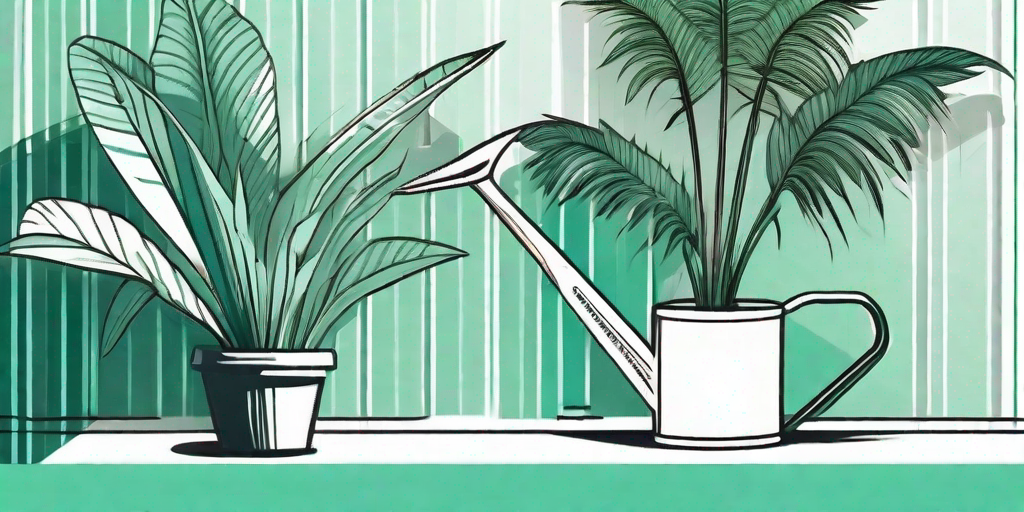
Welcome to the world of tropical gardening! If you're yearning for a slice of the tropics in your backyard, look no further than the exotic bottle palm. This cheeky little tree, with its bulbous trunk and lush, arching fronds, is sure to turn your garden into a tropical paradise. But before you rush off to the nursery, let's dive into the nitty-gritty of growing and caring for your own bottle palm.
Understanding the Bottle Palm
First things first, let's get acquainted with our tropical friend. The bottle palm, or Hyophorbe lagenicaulis, is a small palm native to the Mascarene Islands in the Indian Ocean. Its name comes from its distinctive bottle-shaped trunk, which swells at the base and tapers towards the top. This unique shape, coupled with its crown of feathery fronds, makes the bottle palm a striking addition to any garden.
But the bottle palm isn't just a pretty face. This hardy tree can withstand a range of conditions, from full sun to partial shade, and is relatively low-maintenance. However, it does have a few specific needs that must be met to ensure its health and longevity. So, let's roll up our sleeves and get down to the business of bottle palm care.
Planting Your Bottle Palm
Choosing the Right Spot
Location, location, location! This isn't just important in real estate, but also in gardening. Bottle palms prefer a sunny to partially shaded spot with well-drained soil. They're not fans of waterlogged roots, so avoid areas where water tends to pool. And remember, these palms love the heat, so a spot that gets plenty of warmth is ideal.
When choosing a location, also consider the mature size of the palm. Bottle palms can reach up to 10 feet in height and spread up to 6 feet wide. So, make sure your palm has plenty of room to grow and won't be crowded by other plants or structures.
Planting the Palm
Once you've found the perfect spot, it's time to plant your palm. Dig a hole twice as wide and just as deep as the root ball. Place the palm in the hole, making sure the top of the root ball is level with the soil surface. Backfill the hole with soil, firming it gently around the base of the palm. Water thoroughly to settle the soil and eliminate air pockets.
And voila! You've planted your bottle palm. But don't pop the champagne just yet. There's still plenty of work to do to ensure your palm thrives.
Caring for Your Bottle Palm
Watering and Feeding
Bottle palms are fairly drought-tolerant once established, but they do appreciate regular watering. Aim to keep the soil consistently moist, but not waterlogged. Overwatering can lead to root rot, which is a surefire way to send your palm to the big garden in the sky.
As for feeding, bottle palms are not heavy feeders, but they do benefit from a balanced palm fertilizer applied during the growing season. This will provide the necessary nutrients for growth and help maintain the palm's vibrant green color.
Pruning and Maintenance
Pruning a bottle palm is a bit like giving a haircut to a child - less is more. Only remove dead or dying fronds, as over-pruning can stress the palm and slow its growth. And remember, those fronds are the palm's food factory, so the more you remove, the less energy the palm has to grow.
Aside from occasional pruning, bottle palms require little maintenance. Just keep an eye out for pests and diseases, and your palm should thrive.
FAQs
- Can I grow a bottle palm indoors?
Yes, bottle palms make excellent indoor plants. Just make sure they get plenty of light and aren't overwatered.
- How fast do bottle palms grow?
Bottle palms are slow growers, typically adding just one new frond per year. But remember, good things come to those who wait!
- Are bottle palms frost tolerant?
Unfortunately, no. Bottle palms are tropical plants and don't handle frost well. If you live in a frost-prone area, consider growing your palm in a pot and bringing it indoors during the colder months.
Wrapping Up
So there you have it, a comprehensive guide to growing and caring for your own bottle palm. With a bit of patience and care, you'll soon have a slice of the tropics in your own backyard. And who knows, you might even develop a green thumb in the process!
Remember, gardening is a journey, not a destination. So, take your time, enjoy the process, and before you know it, you'll be sipping a piña colada under the shade of your very own bottle palm. Happy gardening!















